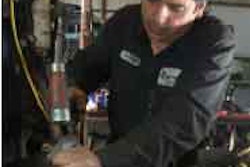
A brief window of opportunity remains for allocating money to a retirement fund to reduce your 2010 tax bill. For most owner-operators, that means adding to an individual retirement account by April 18. (The deadline was delayed this year because April 15 is designated for the District of Columbia’s observance of Emancipation Day, which falls on Saturday, April 16.)
“If you can find a way to get any money at all put into an IRA, it’s such a great deal,” says Mark Miller, tax consultant at ATBS, the nation’s largest owner-operator financial services company. “I still think it’s one of the best tax deductions, and you’re really not spending any money.”
Not all retirement account types are created equally, though. Factors such as your age, retirement goals, present and expected tax brackets, and the amount of money available to save are important considerations.
TRADITIONAL IRAS. Contributions to a basic IRA reduce your taxable income dollar for dollar for the filing year. Contributions of up to $5,000 can be made for individuals younger than 50 and $6,000 for those older than 50. Owner-operators with non-working spouses can make contributions on behalf of their spouses, doubling the allowable contribution.

The benefit of traditional IRAs is “the presumption that many years from now, you’re going to be in a lower tax bracket, which is the case with most people when they retire,” says Dennis Bridges, an accountant at the Atlanta-based eTruckerTax firm. “You get to take the deduction now, and when you withdraw the money when you’re 70 years old, you’ll be in a lower tax bracket when you pay taxes on it.”
Miller says owner-operators should contribute systematically to IRAs. “If there’s any way you can put just $25 a week into an IRA, you’re that much ahead of the game. Once 20 or 30 years go by, you’ll have a nice little nest egg.”
ROTH IRAS. Money invested in a Roth IRA does not reduce taxable income for the current filing year. When the money is withdrawn from the account, though, it is not taxable income. The money also grows tax-free, so any growth through interest, dividends or equity is not taxed upon withdrawal. Considering that long-term investments can easily double or triple in value, that can be a substantial tax savings.
Roth IRAs “make the opposite presumption” of traditional IRAs, Bridges says, in that some of those who invest in them anticipate being in a higher tax bracket later in life, which can be an ideal solution for young owner-operators. “If you want to start a retirement account but you don’t think you’re in your heavy earning years, a Roth IRA would make sense,” Bridges says.
Roth IRA rules for contribution limits and contributions for non-working spouses are the same as those for traditional IRAs, says Mary Beth Franklin, senior editor for Kiplinger’s Personal Finance magazine. When deciding between a Roth IRA and a traditional IRA, she says, simply think about when it would make more sense to get a tax break.
“If you’re in your 40s and in peak earning years, it usually doesn’t make much sense to put money into a Roth IRA,” she says.
Other options for the self-employed
Mary Beth Franklin, of Kiplinger’s Personal Finance magazine, says owner-operators, because they are self-employed, have more flexibility in choosing retirement account options. “You can set up your own account and save substantially more than employees can,” she says.
Individual 401(k) accounts allow an owner-operator to set up a retirement account and save much more than with an IRA, Franklin says. Individual 401(k) accounts, also known as Single-Owner 401(k) accounts, offer the same tax deferral benefits as traditional IRAs. Contribution limits are based on income, says Dennis Bridges, accountant at the eTruckerTax firm, and about 20 percent of net income can be contributed to an Individual 401(k) account each year. Like a traditional IRA, taxes are paid at withdrawal, including taxes on dividends and other growth.
Roth 401(k) accounts require that taxes are paid on contributions in the year in which they are earned. As with a Roth IRA, when the money is withdrawn, including its appreciation, none of it is taxable. Contributions for Roth 401(k) accounts are the same as Individual 401(k) accounts — about 20 percent of net income.
SEP IRA refers to Simplified Employment Pension plans, which are similar to Individual 401(k) accounts, Bridges says, in that contribution limits are based on income and taxes are avoided until money is withdrawn from the account. Unlike 401(k) accounts, money can’t be borrowed from SEP IRAs, but the startup fees are less than those for starting a 401(k).
How to open a retirement account
An individual retirement account or an individual 401(k) account can be funded with mutual funds, stocks, bonds or cash. If you have a stock broker, he or she can help you start an account. Otherwise, see your banker or financial adviser, or search online for mutual fund families that offer accounts.
Once you have an account, consider an automatic monthly draft, even if it’s very small, from your checking account to the retirement account. This will ensure steady growth and relieve you of having to make repeated deposits.










